The ocean is one of the most mysterious environments on Earth, home to countless strange and beautiful creatures. However, not all marine creatures are safe to touch. Some animals may seem harmless, but they have powerful defense mechanisms that can cause serious harm to humans. This article will introduce several aquarium/52-marine-animals.html">marine animals that humans should not touch, to help you understand the potential dangers in the ocean.
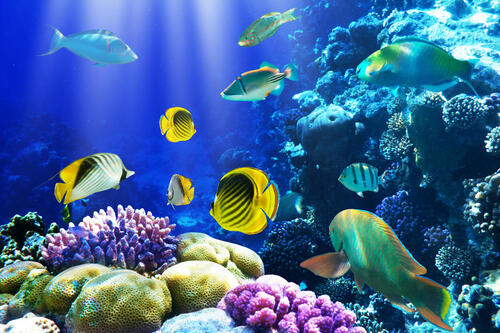
Danger: Box jellyfish are considered one of the most deadly marine creatures in the world. Their tentacles are covered with highly toxic stinging cells that can quickly release toxins, causing severe pain, cardiac arrest, and even death.
Habitat: Mainly distributed in the warm waters of Australia and Southeast Asia, especially in shallow waters.
Recommendations: When swimming in these areas, be sure to pay attention to jellyfish warning signs and avoid contact with any jellyfish in the sea water.
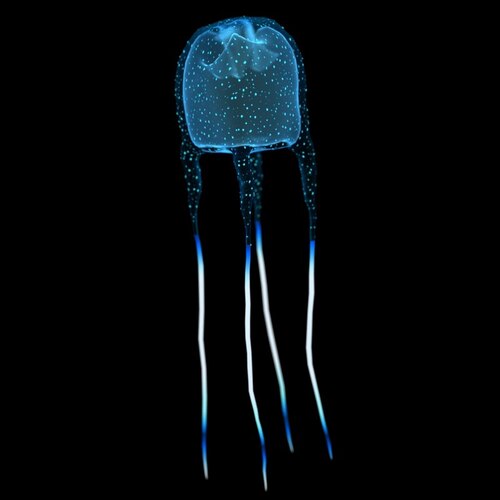
Danger: Blue-ringed octopus are beautiful in appearance, but extremely dangerous. The toxins they secrete are enough to paralyze adults within minutes, and even cause respiratory failure and death. There is currently no antidote for the toxins of blue-ringed octopus.
Habitat: Mainly distributed in intertidal rocky areas and coral reefs in Australia, the Indian Ocean and the Pacific Ocean.
Recommendation: If you see a blue-ringed octopus, do not approach or try to touch it, and keep a safe distance.
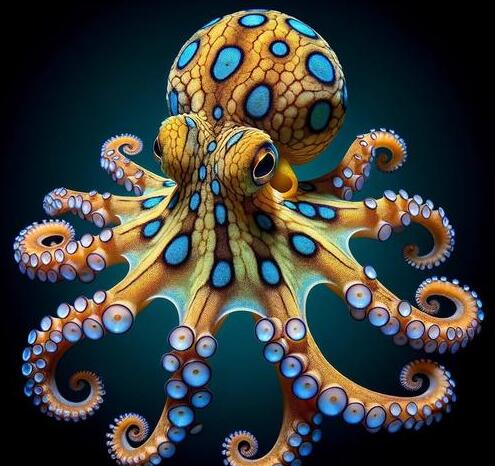
Danger: Stonefish are one of the most toxic fish in the world. They disguise themselves as rocks and hide on the seabed. When humans accidentally step on them, the venomous spines on their backs will pierce the skin, releasing severe poison, causing severe pain, tissue necrosis, and may even be fatal.
Habitat: Widely distributed in shallow waters of the Pacific and Indian Oceans, especially near coral reefs and beaches.
Recommendations: Wear protective shoes when swimming or diving in these waters, and always pay attention to the environment under your feet.
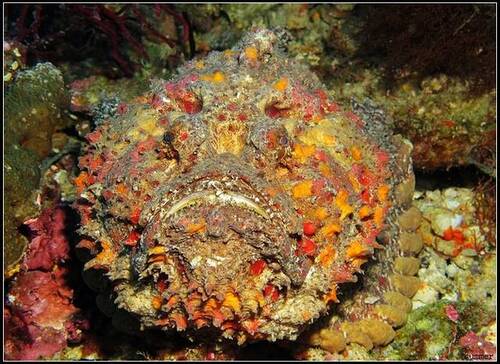
Danger: Lionfish are famous for their gorgeous appearance and venomous spines. The fin spines on their backs contain venom, which can cause severe pain, swelling and difficulty breathing when pierced into the human body. Although they are not often fatal, their toxins are extremely harmful to the body.
Habitat: Lionfish are mainly found in coral reefs in the Indian and Pacific Oceans, but have also appeared in the Caribbean and Atlantic Oceans in recent years.
Recommendations: When viewing these beautiful fish, be sure to keep a safe distance and avoid direct contact with their stings.
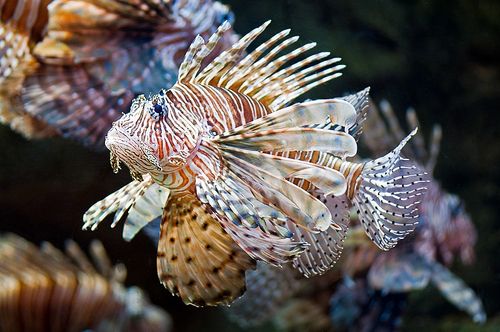
Danger: Although fire corals look similar to ordinary corals, their surface is covered with stinging cells, which release toxins upon contact, causing burning pain, redness, and rashes.
Habitat: Widely distributed in tropical and subtropical coral reefs, especially in the Red Sea, Indian Ocean and Caribbean.
Recommendation: Do not touch corals directly when diving, especially fire corals, to avoid accidental injury.
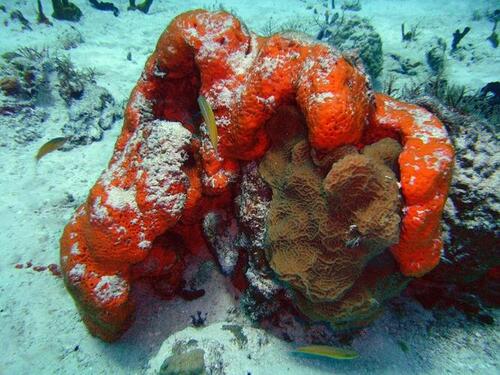
Danger: Surgeonfish have sharp spines on their backs and tails. These spines carry toxins that can cause severe pain, swelling and infection.
Habitat: Widely distributed in tropical waters of the Indian and Pacific Oceans, especially near coral reefs.
Suggestions: Keep your distance when admiring these fish and avoid trying to touch or catch them.
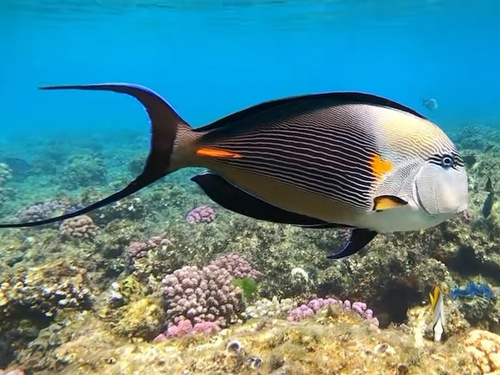
Danger: Cone snails are known for their beautiful shells and powerful venom. Their venom is injected into prey or enemies through their spike-like teeth, enough to cause paralysis or even death. There is no antidote for the toxins of cone snails for humans.
Habitat: Mainly distributed near coral reefs and beaches in the Indian and Pacific Oceans.
Suggestion: Do not pick up beautiful conch shells with your bare hands, especially cone conchs. Although their appearance is attractive, they are extremely dangerous.

Danger: Sea snakes are one of the most venomous snakes. Although they usually do not actively attack humans, their venom can be fatal in a short time if threatened.
Habitat: Mainly live in warm waters in the Indian and Pacific Oceans, especially in coral reefs and coastal shallow waters.
Recommendation: Do not try to approach or tease a sea snake when you see one, keep your distance and avoid being attacked.
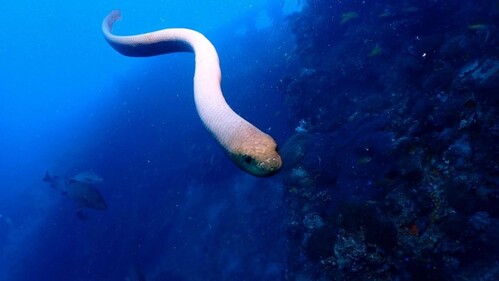
Although many animals in the ocean are beautiful and charming, they have powerful defense mechanisms and can cause serious harm to humans. In marine activities, respecting the natural habitat of these creatures and keeping an appropriate distance is the best way to avoid danger. Understanding the characteristics and habits of these animals can help us ensure our own safety while enjoying the beauty of the ocean.
The ocean covers more than 70% of the earth's surface, maintains the global ecological balance, and breeds a rich variety of marine life. However, with the increase in human activities, the ocean and its creatures are facing unprecedented threats. This article will explore the impact of humans on marine life and the resulting crisis.
Impact: Overfishing is one of the most direct human damage to marine life. Large-scale commercial fishing is rapidly reducing fish populations, especially high-value fish species such as bluefin tuna and sharks. The number of some species has dropped to a point where it cannot recover, disrupting the balance of the food chain.
Consequences:
Ecological imbalance: The reduction of fish affects the stability of the food chain, making it impossible for predators and other organisms that rely on these fish to survive.
Endangered species: Many fish species are endangered due to overfishing, such as Atlantic cod and many sharks.
Impact: Plastic pollution, chemical spills and oil spills are the main causes of death of marine life. Every year, a large amount of plastic waste flows into the ocean, forming "garbage islands". Many marine life mistakenly eat plastic, causing digestive tract obstruction and even death.
Consequences:
Death of marine life: For example, turtles, seabirds and fish died due to eating plastic or being entangled in plastic.
Toxin accumulation: Chemical pollutants such as heavy metals, pesticides and industrial waste enter marine organisms through water bodies and accumulate in the food chain, ultimately affecting human health.
Impact: Global climate change is changing the physical and chemical properties of the ocean. As carbon dioxide emissions increase, the ocean absorbs a large amount of CO₂, leading to ocean acidification. Acidification destroys the living environment of coral reefs and calcareous organisms, affecting other organisms that rely on these ecosystems.
Consequences:
Coral bleaching: Coral reefs are the habitat of marine organisms, but due to the warming of sea water caused by climate change, coral reefs are bleached on a large scale, and biodiversity is threatened.
Shellfish survival affected: Ocean acidification makes it difficult for shellfish and crustaceans to form a strong shell, reducing their chances of survival.
Impact: Human development activities, such as urbanization, port construction and tourism in coastal areas, have led to the destruction of many marine habitats, especially important ecosystems such as mangroves, seagrass beds and coral reefs.
Consequences:
Species loss: Many marine organisms rely on these habitats for reproduction and foraging. Once the habitat disappears, the number of species will also drop sharply.
Imbalance of marine ecosystems: Habitat destruction leads to ecosystem collapse, further exacerbating biodiversity loss.
Impact: Illegal hunting and illegal trade of aquarium/52-marine-animals.html">marine animals pose a fatal threat to some endangered species. Products such as shark fins, seahorses, and turtle shells are highly sought after in the market, causing the number of these species to decline sharply.
Consequences:
Species are on the verge of extinction: For example, tens of millions of sharks are killed each year for the shark fin trade, and some shark species are already on the verge of extinction.
Ecological balance is broken: Illegal hunting not only reduces the number of certain species, but also destroys the stability of the ecosystem.
Impact: Noise pollution in the ocean comes from ships, drilling platforms and sonar equipment. These noises interfere with the normal life of marine life, especially animals such as whales and dolphins that rely on sound waves for navigation and communication.
Consequences:
Abnormal behavior: Noise pollution causes marine mammals to lose their way and even strand, seriously affecting their foraging and reproduction.
Increased stress: Marine animals exposed to noise for a long time will face great psychological and physiological stress, which will affect their survival.
In order to address the negative impact of human beings on marine life, protection measures are gradually being strengthened around the world.
Establishing marine protected areas (MPAs)
Establishing marine protected areas is one of the important measures to protect marine biodiversity. In these protected areas, fishing activities are prohibited or restricted to ensure that species can reproduce and recover their numbers.
Reduce plastic use
Reduce the use of disposable plastic products, promote sustainable plastic alternatives, and prevent plastic waste from entering the ocean.
Strengthen the response to climate change
Reduce greenhouse gas emissions and take global collaborative measures to mitigate the impact of climate change on the ocean and protect coral reefs and marine ecosystems.
Implement sustainable fishing
Promote sustainable fishing policies, protect fish stocks, and reduce the negative impact of overfishing on marine ecosystems.
Education and publicity
Raise public awareness of marine protection, encourage individuals to reduce marine pollution, and support environmental protection projects and organizations.
Human activities have had a profound and widespread impact on marine life. However, it is still possible to protect marine life and its habitats through global cooperation and individual action. Only by working together can we ensure the future of the ocean and its diverse life can continue to thrive.
animal tags: Box-Jellyfish Blue-Ringed-Octopus Stonefish Lionfish Fire-Coral Surgeonfish Cone-Snail Sea-Snake
We created this article in conjunction with AI technology, then made sure it was fact-checked and edited by a Animals Top editor.